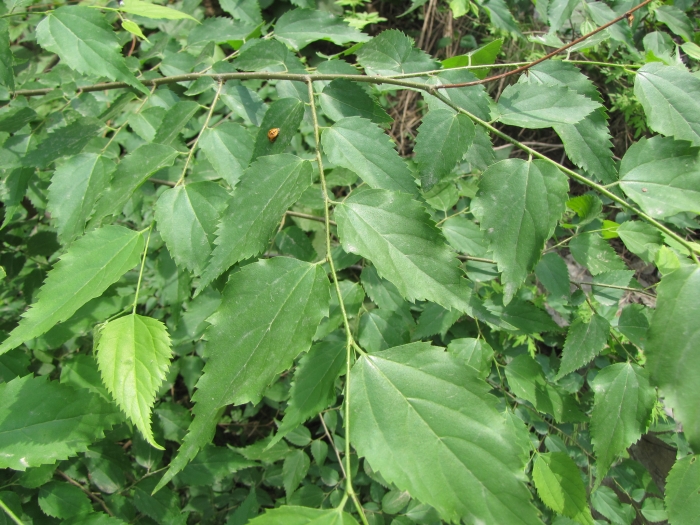Blue Sandalwood
(Pteroceltis tatarinowii)
Blue Sandalwood (Pteroceltis tatarinowii)
/
/

Jens-Christian Svenning
CC BY 4.0
Image By:
Jens-Christian Svenning
Recorded By:
Copyright:
CC BY 4.0
Copyright Notice:
Photo by: Jens-Christian Svenning | License Type: CC BY 4.0 | License URL: http://creativecommons.org/licenses/by/4.0/ | Rights Holder: Jens-Christian Svenning | Publisher: iNaturalist | Date Created: 2013-05-31T06:45:54-07:00 |

























Estimated Native Range
Summary
Pteroceltis tatarinowii, commonly known as blue sandalwood or wingceltis, is a deciduous tree native to the forested mountains and limestone regions of central and eastern China. It can grow up to 66 feet (20 meters) tall with a straight trunk and a rounded crown. The tree is notable for its pale gray bark, which peels off in patches, and its oblong, serrated leaves that turn yellow in the fall. Wingceltis produces inconspicuous greenish-white flowers in the spring, followed by distinctive winged fruits that mature in autumn.
Blue sandalwood is valued for its hard, fine-grained wood used in furniture making and construction. The bark fiber is highly regarded for producing Xuan paper, an important material for Chinese calligraphy and painting. Additionally, the seeds of Pteroceltis tatarinowii are a source of oil. In cultivation, it requires well-drained soils, preferably alkaline, and thrives in full sun to partial shade. While not commonly found in Western gardens, it can be an attractive ornamental tree with its unique bark and fall coloration. It is relatively low-maintenance but may be susceptible to pests and diseases common to hardwood trees.CC BY-SA 4.0
Blue sandalwood is valued for its hard, fine-grained wood used in furniture making and construction. The bark fiber is highly regarded for producing Xuan paper, an important material for Chinese calligraphy and painting. Additionally, the seeds of Pteroceltis tatarinowii are a source of oil. In cultivation, it requires well-drained soils, preferably alkaline, and thrives in full sun to partial shade. While not commonly found in Western gardens, it can be an attractive ornamental tree with its unique bark and fall coloration. It is relatively low-maintenance but may be susceptible to pests and diseases common to hardwood trees.CC BY-SA 4.0
Plant Description
- Plant Type: Tree
- Height: 30-45 feet
- Width: 30-40 feet
- Growth Rate: Moderate
- Flower Color: Green
- Flowering Season: Spring
- Leaf Retention: Deciduous
Growth Requirements
- Sun: Full Sun
- Water: Low, Medium
- Drainage: Medium
Common Uses
Bank Stabilization, Border Plant, Deer Resistant, Erosion Control, Low Maintenance
Natural Habitat
Forested mountains and limestone regions in central and eastern China
Other Names
Common Names: Tatarian Maple, Wingceltis, Chinese Elm
Scientific Names: , Pteroceltis tatarinowii, Pteroceltis tatarinowii subsp. pubescens, Pteroceltis tatarinowii var. pubescens, Ulmus cavaleriei,
GBIF Accepted Name: